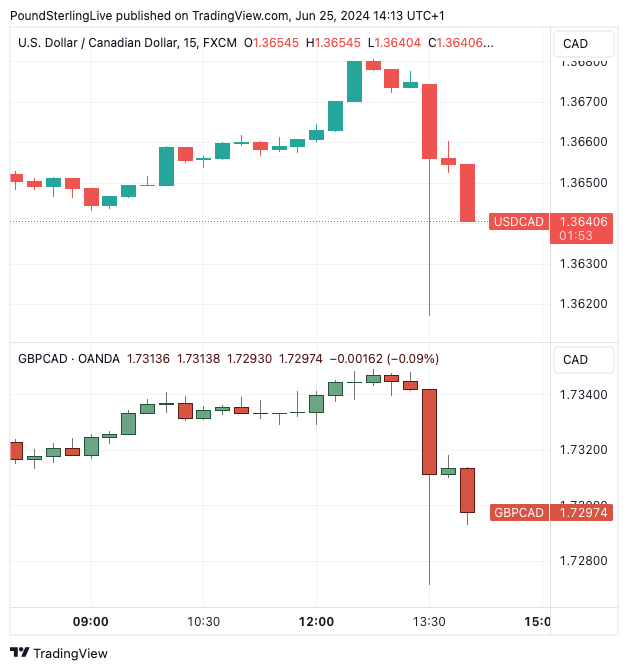
Image © Bank of Canada
The Canadian Dollar jumped after Canadian inflation unexpectedly rose in May, prompting investors to question whether the Bank of Canada could cut interest rates any further.
The Pound to Canadian Dollar exchange rate dipped to 1.7271 in the minutes following news Canadian inflation rose 0.6% month-on-month in May, more than doubling the expected amount. The U.S. Dollar to Canadian Dollar rate fell as low as 1.3620.
The year-on-year rate rose to 2.9% from 2.7%, whereas the market looked for another fall to 2.6%.
Measures of core inflation, which the Bank of Canada monitors closely, also rose. CPI-trim and CPI-median each rose by 0.3% m/m, and the average monthly gain in April was revised up to 0.2%, a step up from the 0.1% gains seen over the first three months of the year.
This helped the three-month annualised rate rise back up to 2.5%.
Kyle Chapman, FX Markets Analyst at Ballinger Group, says these data come as quite a surprise and raise questions about a second Bank of Canada rate cut in July.
"That said, the uptick is the product of base effects and what is likely a transitory surge in tourism costs associated with travelling to the US. And the rent issue cannot be solved by keeping rates restrictive," says Chapman.
Above: USD/CAD and GBP/CAD (bottom) showing post-release movement. Track CAD with your own alerts, find out more here.
The market seems inclined to view the inflation surprise as a blip as the Canadian Dollar has returned some initial gains to trade close to where it was before the inflation figures were released.
"Today’s single piece of data does not materially alter the dovish outlook for the Bank of Canada, and the road to 2% was never going to be perfectly linear. I still think we’re on for another cut next month, and that policymakers can look through the May report given the extent of the labour market cool off," says Chapman.
In fact, it is hard to see how above-consensus inflation figures are any good for a currency if it means the country is heading into an environment of high inflation, low growth. and loosening labour markets.
Markets will now assess next month's job figures and inflation release for clearer economic direction.
"The stronger monthly gains in the Bank of Canada’s preferred core price measures will give the Bank some cause for concern after starting its loosening cycle in June. However, with some of that strength due to factors that are likely to be one-offs, and given there is another CPI report before the late July meeting, for now we are sticking with our view that the Bank will cut again next month," says Olivia Cross, North America Economist at Capital Economics.

